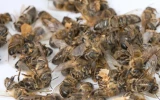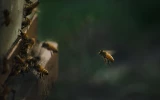How To Tell If a Carpenter Bee Is Dying (or Just Tired)
When carpenter bees pollinate flowering plants, they face challenges along the way that cause them to be exhausted or put them on the brink of death. Here is what we know so far about how to tell if a carpenter bee is dying or just tired, so you can better understand their condition and take appropriate action to help them.
A dying carpenter bee has tattered wings and can be found clinging to flowers before it passes on. On the other hand, a tired bee will appear lethargic while resting on the ground, with its wings still intact and its body still responding well to external stimuli.
Below, you'll learn more about a bee that is either dying or just tired based on its physical appearance, behavior, and the location where you found it. We'll also be discussing the factors that cause carpenter bees' exhaustion or death and how you can help a tired bee.
Summary
- A dying carpenter bee has ragged wings and often has a darker body. They are often found clinging to flowers before they pass on and die. Therefore, when you find them, they will usually be at locations where there are nearby nectar sources or a flower garden.
- A tired carpenter bee will not exhibit any injury or show any signs of distress. They will most likely be resting on the ground. Therefore, they are usually seen on pavements, grasses, and other surfaces.
- Factors such as seasonal changes, exposure to pesticides and poisons, and parasites and diseases cause a bee's death or fatigue.
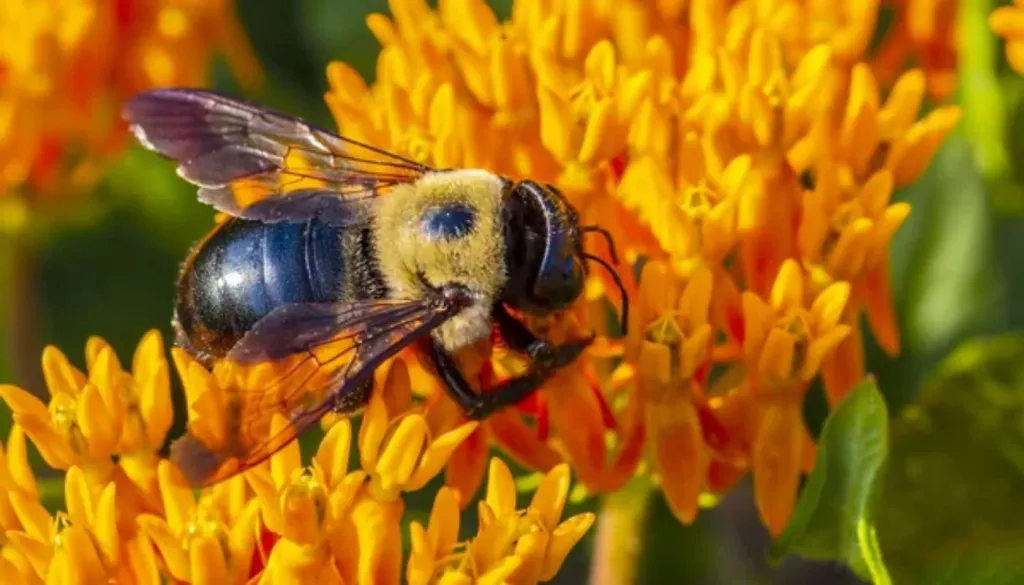
On this page:
Signs of a Dying or Tired Carpenter Bee
In urban environments, you’ll find more stressed bees. You will usually find tired bees in the city, struggling to crawl back to where you found them due to a lack of nectar resources to sustain their flight back.
In some cases, you’ll find dead bees clinging to flowers with darker bodies and ragged wings, with some having their tongues out as if they are poisoned.
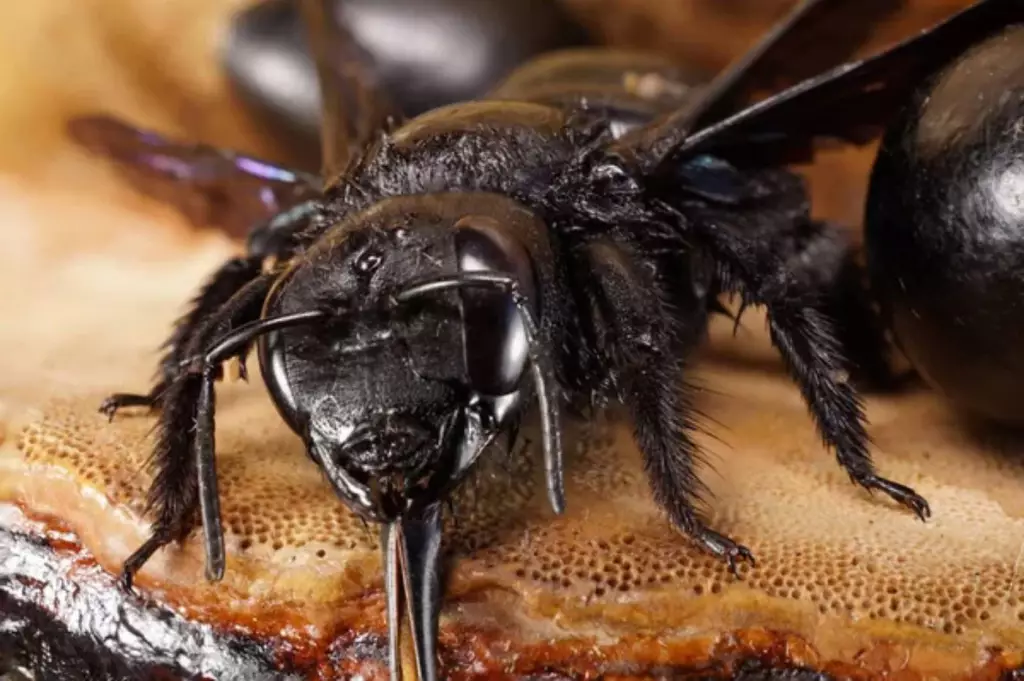
Carpenter bees are no exception, and knowing how to identify whether they are dying or just tired can not only help you feel more connected to your environment but also help you contribute to the well-being of these essential pollinators. Here’s how to differentiate them:
A dying and a tired bee differ in physical appearance
When trying to determine if a carpenter bee is dying or just tired, pay close attention to its physical appearance. Dying bees often have darker bodies and ragged wings, making them look worn out and less vibrant than healthy bees.
In contrast, tired bees might show no visible signs of distress or injury, but they may be crawling on the ground or lying in the grass, possibly appearing disoriented.
A dying and a tired bee exhibit different behaviors
You'll notice different behaviors in dying and tired bees as well. A dying bee might be found clinging to flowers before it passes on and drops off. On the other hand, a tired bee may be resting on the ground, trying to regain energy before continuing with its tasks.
If you find a bee in distress, it's recommended to give it one drop of sugar mixed in water to help it regain strength. Avoid giving it honey, as it can carry diseases and attract other bees, causing more stress.
The location of a dying or a tired bee tells their condition
The location where you find a carpenter bee is also a clue to their condition. Dying bees are often found nearer to flowers or nectar sources, as they likely stopped functioning during their last foraging journeys.
Tired bees might not be selective about their resting spots and can be found on pavement, grass, or other surfaces. Be careful not to confuse tired bees with queen bees, who are frequently grounded, or those who are simply at rest.
Factors Causing Carpenter Bee’s Fatigue or Death
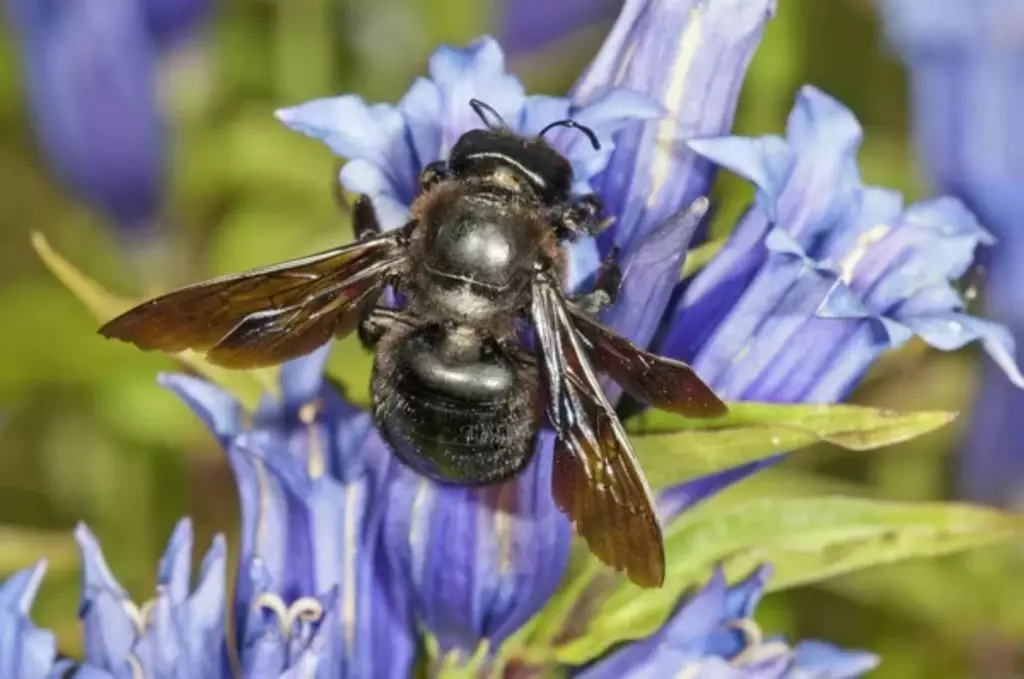
You know the signs to identify whether a carpenter bee is dying or needs help to recuperate from exhaustion. However, you might not be familiar yet with what’s causing their death or their fatigue. This section of the article will focus on these factors.
Carpenter bees are affected by seasonal changes
During winter, carpenter bees hibernate inside their nests, and their activity significantly decreases. As the temperature starts rising in spring, you'll notice them emerging and becoming more active in search of food, mating partners, and nesting sites.
However, sudden or extreme fluctuations in the weather can take a toll on their energy levels, causing fatigue or even death. If a cold snap occurs during an otherwise warmer season, it can leave carpenter bees struggling to survive.
Exposure to pesticides or poison can affect the bees
Pesticides can have deadly consequences for carpenter bees, especially if they're exposed to high levels of these chemicals. While it's important to protect your garden and home from pests, using pesticides indiscriminately isn't advisable.
Perhaps you’d want to be more careful when choosing and applying pesticides, as some varieties can harm these helpful pollinators. You may opt for more bee-friendly solutions, such as those containing citronella oil, which can deter carpenter bees without causing harm.
If your goal is to control the carpenter bee population without killing them, you could consider alternative methods. For instance, applying a vinegar solution can kill carpenter bee larvae without affecting adult bees.
Parasites and diseases can weaken carpenter bees
Carpenter bees can also suffer from parasites and diseases, which can weaken their immune systems. One common parasite that causes lethargy or death at worst in carpenter bees is the Varroa mite.
Varroa mites are external parasites that latch onto bees, sucking their bodily fluids and making them more susceptible to diseases. If you notice bee populations declining or a high presence of mites in your garden, you need to take the necessary steps to reduce their impact.
You may read this article on the 3 Ways to Prevent Varroa Hive Mites That'll Actually Work.
Helping a Tired Carpenter Bee
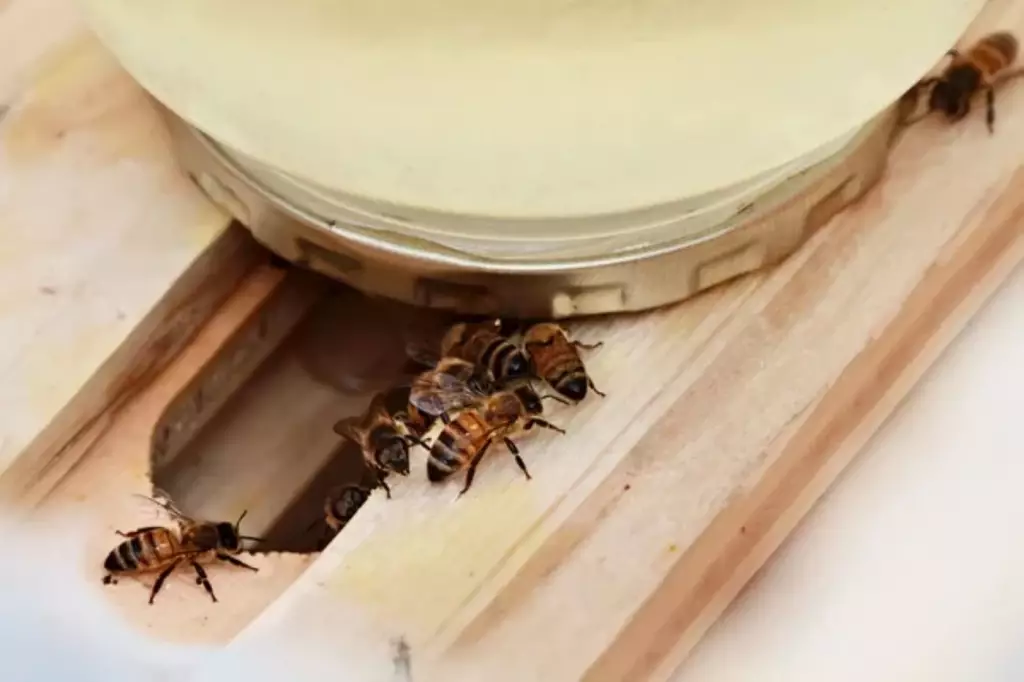
You may have seen extremely lethargic carpenter bees lurking around your home. Your first response should be focused on helping them regain their strength. Here's how you can help a tired carpenter bee:
Help a tired bee by providing nourishment
If you come across a tired carpenter bee, one of the best ways to help is by providing it with some nourishment. Carpenter bees feed on nectar and pollen from flowers. You can gently pick up the bee and place it near a flower with abundant nectar, allowing it to recover and regain its energy.
If you don't have a flower readily available, you may offer the bee a sugar-water solution. Mix about a teaspoon of sugar in 2 teaspoons of water and give the bee one single drop. However, be cautious not to soak or get the bee wet with the solution, as it may cause harm, making the bee worse off.
Help a tired bee by creating a safe space
Carpenter bees need a safe environment to rest and regain their energy. Be sure to keep the area around the tired bees free from threats like pets or other creatures. Gently move the bee to a safe space, like a bush or tree branch, where it can recuperate in peace.
Help a tired bee by seeking professional help
While helping a tired carpenter bee can be rewarding, sometimes it may be best to seek professional help.
If you notice several tired bees around your property, suspect a carpenter bee infestation, or find evidence of carpenter bees boring holes into wood surfaces, consider contacting a local pest control expert. They can assess the situation and recommend appropriate steps to manage the problem.
